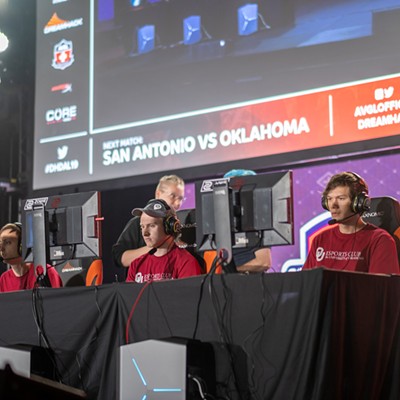
Poll results indicate challenger Ed Shadid will need to energize new voters in significant numbers to wage a successful challenge.
Results of the poll were weighted by sex and age and were adjusted using a model reflecting participation in previous Oklahoma City mayoral elections. The poll was conducted from February 17 to 19, 2014.
Selected indicators cross-tabulated from the poll are shown below.
The representations for “Other” in the graphs include all selections for Joe “Sarge” Nelson, Phil Hughes, Undecided, Don’t Know and Unsure. Results have been rounded to the closest percentage.
+++
Traditional voters dominate
If the Oklahoma City mayoral election were held today, Mayor Mick Cornett would win, according to a recent poll.
A News9/Oklahoma Gazette poll of likely voters showed that Cornett, the incumbent, led the fray with nearly 64 percent of the vote.
Ward
2 Councilman Ed Shadid trailed with about 19 percent of the vote.
Undecided probable voters clocked in at just over 9 percent.
Trailing candidate Joe “Sarge” Nelson earned 6 percent, and businessman Phil Hughes earned about 2 percent.

The
scientific poll won’t influence the election, though it does show
“where people are and where they’re going,” according to Bill Shapard,
owner of Shapard Research, which conducted the scientific poll.
“It’s a mirror reflecting back the view of the public at one point in time,” he said.
If Cornett wins this race, it means an unprecedented fourth term.
Turnout
is generally low for nonpartisan elections, Shapard said, and Cornett
hasn’t faced a serious opponent since his first election back in 2003.
Voting tendencies
As
for the youngest and oldest voter demographics, 13 percent of voters
age 18-24 were likely Shadid voters. Similarly, 33 percent of this
bracket were likely Cornett voters.
Seventeen percent
of likely 65-andolder voters favored Shadid while a whopping 77 percent
of that age group favored Cornett, results showed.
“There
will probably be an overall disappointment from ... voters that these
results aren’t as close as many generally perceived,” Shapard said.
General opinion pegged young voters for Shadid, a first-term member of the Oklahoma City Council.
“This hasn’t turned out to be the case,” Shapard said.
History also showed that the eldest group also votes the most frequently.
Probable voters are also generally more involved in their communities, Shapard said.
His analysis also showed that likely voters more often attend religious services.

Seventy-one percent of voters who
attend religious services “once a week or more” are in the Cornett
camp. Eighteen percent of people who frequently attend religious events
are Shadid supporters, research showed.
Cornett also dominated across gender lines.
Of
males, 65 percent favored the incumbent. Nearly 10 percent favored
Nelson, three percent favored Hughes and almost 20 percent favored
Shadid.
A higher rate
of women also favored Cornett. Nearly 73 percent favored the mayor, 6
percent favored Nelson, 2 percent favored Hughes and 19 percent favored
Shadid.
Polling method
Shapard
used a combination of push-button responses from phone numbers randomly
selected from likely voters within Oklahoma City and a combination of
live surveys given to OKC cellphone users, he said.
It’s against Federal Communications Commission regulations to send recorded messages to a cellphone, Shapard said.
The role of the media in elections is “critical,” he said.

Far
different from campaign polls and door-to-door mailers and other
methods, data gathered from news organizations provides “honest
analysis” of the audience most likely to participate in key elections.
News9/Oklahoma Gazette poll data was weighted to make the poll results more reliable.
For example, women “answer the phone seven times out of 10,” Shapard said.
In order to get a better estimate of male voters, their answers were weighted more heavily.
With
interactive voice response surveys, Shapard said, “We have no control
over who answers the phone,” since the landline messages are
pre-recorded.
The poll of likely voters had 980 responses with a margin of error of plus or minus 3.13 percent, he said.
News9’s Kelly Ogle recorded the intro for use in the Interactive Voice Response portion, except for the live cellphone surveys.
“With Kelly leading the polling, it’s a voice that everyone recognizes,” Shapard said. “We had a very high participation rate.”
Nearly 10 percent of people the company called participated in the poll, Shapard said.











